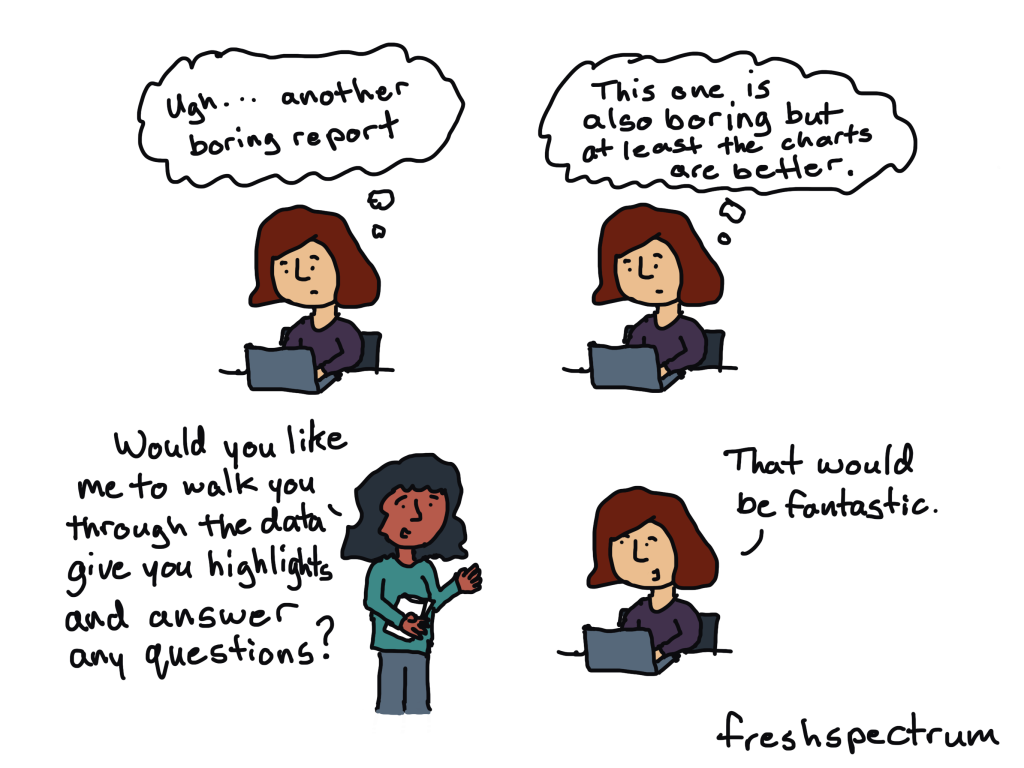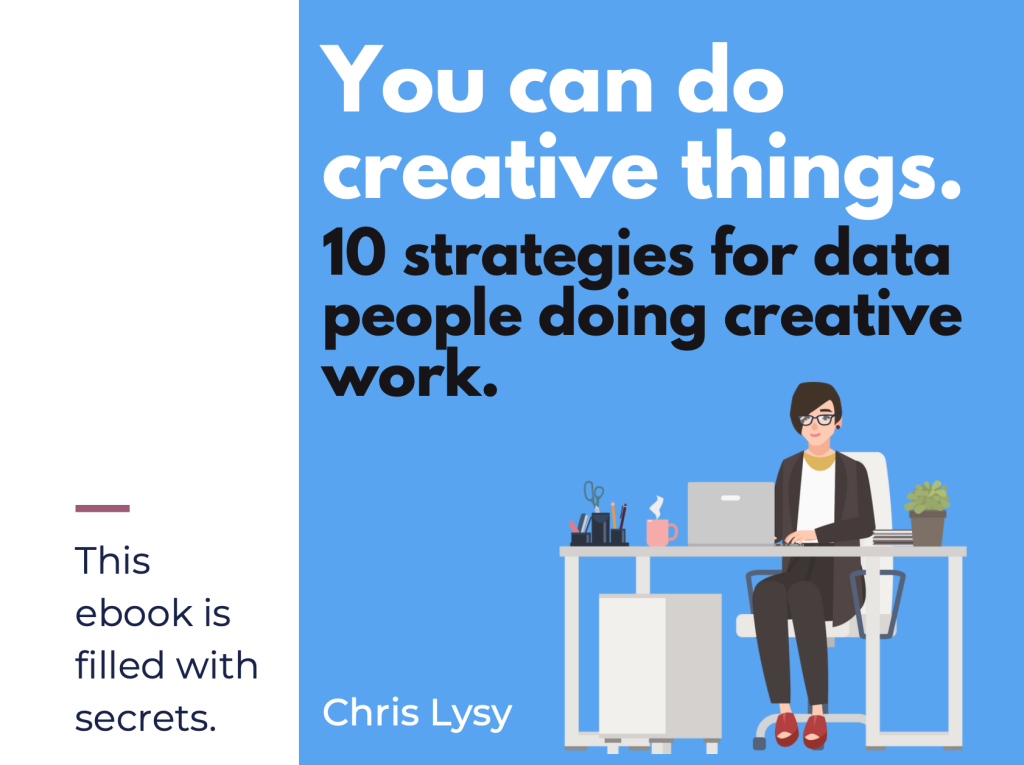This is an Eval Central archive copy, find the original at freshspectrum.com.
Referring to data visualization as information design is like referring to survey design as evaluation. Yes, evaluators tend to design surveys. But there is way more to being an evaluator than designing a survey.
Learning how to be an information designer requires more than learning how to create nice looking charts, infographics, presentations, and reports. And while designing all these different things usually falls into the realm of information design, there is so much more you can learn.

A few non-dataviz information design challenges…
- How do I get my boss to give me the go-ahead on creating a new design?
- When should I not use a chart?
- How do I inspire an audience?
- How do I simplify this information?
- What communication forms could I use to share this information?
- How do I find stories in this information?
- I have access to lots of things, where do I even start?
- How do I do creative work when I’m not inspired?
- When should I keep things complicated?
- How can I limit iterations and feedback loops?
- Can I adapt this long report into a website?
- Can I turn this website into a string of social media infographics?
- How do I shepherd a team-based creative project to completion?
- How do I know if my designs are working?
- Do I have access to the right tools?
- How do I make this more accessible?
- How do I get better feedback from my team or boss?
- What would make this report interesting?
- How do I cocreate this design with my audience?
- How do I deal with rejection?
- Do I need to listen to this feedback?
- Could this dashboard be an email?
- How do I win a design argument with my boss?
- How do I test my design?
- When should I use a grid?
- What fonts should I use?
- Is this a good color?
Information design is not one thing but lots of little things.
For data people like us, data visualization is certainly part of information design. It’s just not anywhere near all of it.
When I started teaching information design I thought I could build out a series of self-paced modules to answer a lot of the questions I was getting asked. Then I could just teach a few tools and that would create enough value to be worth buying.
But the more I talked to data people about their struggles and challenges the more little questions I would find myself answering. It’s why my workshop is now an academy built around a community. It’s why I teach live. Because developing your information design skills isn’t about learning one big skill or tool but learning lots and lots of little things.
And whenever anything requires lots and lots of little things, the best thing you can do for yourself is to find a supportive community. Preferably one with a facilitator who really really cares about your progression and wants to see you find your best.
Because a good information designer can create nice looking charts, infographics, presentations, and reports.
A great information designer can inform, engage, inspire, and convince.
We need more great information designers.
My latest eBook on doing creative things.
Over the last decade I’ve learned a lot about doing creative work professionally. I tried to think about the things that were the same whether I was designing charts, drawing cartoons, or developing online learning communities. It takes more than just technique and artistic talent to create on a deadline.
I decided to put 10 of my favorite tips and strategies into an eBook.
The eBook is free, you can download it here.
